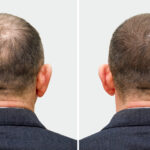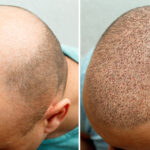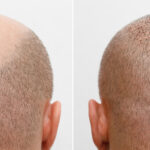In practice, we often encounter the misconception that hair loss and baldness is a problem specific to men. However, statistics shows that regardless of gender, one in four people struggles with hair loss at some point in theit lives.
There are many methods developed as a prevention against hair loss. The most effective and the most satisfactory solution among them is a hair transplantation.
A professional hair transplantation specialist can examine the type, proportion and possible causes of hair loss and decide whether a patient needs a hair transplantation. Hair transplantation can be peformed on anyone over 22 years.
There are different methods and techniques for hair transplantation. At unique clinique – beauty & academy we use methods
FUE – Follicular Unit Extraction
The FUE method is a minimally invasive extraction method in whitch hair follicles are drilled using a menual technique using a sharp hollow needle. The method is gentle and only a minimal dot remains after removal. The visibility depends on the type of skin, the size of the needle used and the density of sampling. When the hair is over 3 mm long, the dots are inconspicuous.
DHI – Direct Hair Implantation
DHI method (direct hair implantation), also known as DHT (direct hair transfer), is a technique that was created to minimize the time between obtaining and inserting grafts. In this technique, hair grafts are gently extracted one by one from the donor area using micro-needles and inserted into the hairless area. The DHI hair transplant procedure is very similar to the FUE method except that the creation of the target area and the implantation of the grafts are done at the same time.
Lorem ipsum dolor sit amet, consectetur adipiscing elit. Ut elit tellus, luctus nec ullamcorper mattis, pulvinar dapibus leo.
The decision between FUE and DHI is based on a number of factors, including the patient’s hair loss categorization, the size of the area of thinning, and the amount of available donor hair. Because hair transplantation is such a personal procedure, the approach that best meets the patient’s expectations is believed to yield the greatest results.
FUE and DHI are two types of hair transplant methods that can help you achieve the desired look. However, there are also such differences between FUE and DHI techniques. This is why it is essential for a person to understand which of these hair transplant procedures is the best option for achieving a pleasing appearance.
The FUE method is best for covering wide areas, while the DHI approach has a better chance of getting higher densities.
Even if the patient intends to undergo a one-time hair transplant using the DHI method, he will be a better candidate for the FUE technique if the patient has severe hair loss and excessively large bald spots that cannot be covered. The reason for this is that the FUE procedure allows a larger number of grafts to be taken in one session.
FUE and DHI are two types of hair transplant methods that can help you achieve the desired look. However, there are also such differences between FUE and DHI techniques. This is why it is essential for a person to understand which of these hair transplant procedures is the best option for achieving a pleasing appearance.
The DHI method differs from previous hair transplant procedures in that it uses a pen-like medical instrument to create recipient sites at the same time the grafts are transplanted.
Compared to the FUE procedure, the DHI procedure offers a shorter recovery time.
The FUE method is best for covering wide areas, while the DHI approach has a better chance of getting higher densities.
During FUE hair transplantation, groups of 1-4 hair follicles, also known as grafts, are hand-picked and placed one at a time into a stock solution. After the extraction is complete, the doctor uses microplates to open the canals. These are the holes or slits into which the grafts are inserted. The doctor can then extract the grafts from the solution and, after opening the channels, implant them into the recipient site.
Patients usually see the initial results of FUE surgery approximately two months after the procedure. More significant growth is often seen after six months, with full results appearing 12-18 months after the procedure.
To begin with, hair follicles are extracted one by one using a specialized instrument with a diameter of 1 mm or less. The hair follicles are then inserted into the Choi Implant Pen, which is used to implant them directly into the recipient area. Channels are created and donors are implanted simultaneously during DHI. When implanting hair follicles, the Choi Implanter Pen enables the precision of a doctor. This way they can control the angle, direction and depth of the newly transplanted hair.
DHI recovery takes the same time as FUE. Results usually occur in a comparable time frame, with full results lasting anywhere from 12 to 18 months.
The way the grafts are placed in the recipient area is the main difference between DHI and FUE. The canals must be opened prior to implantation in the FUE hair transplant so that the surgeon can manually implant the harvested grafts.
DHI, on the other hand, uses specialized equipment. This eliminates the need for initial canalization for the grafts, allowing the implantation step to begin immediately after extraction.
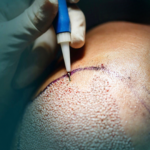


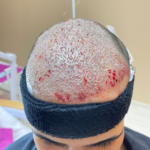
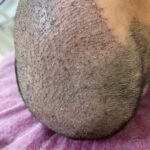

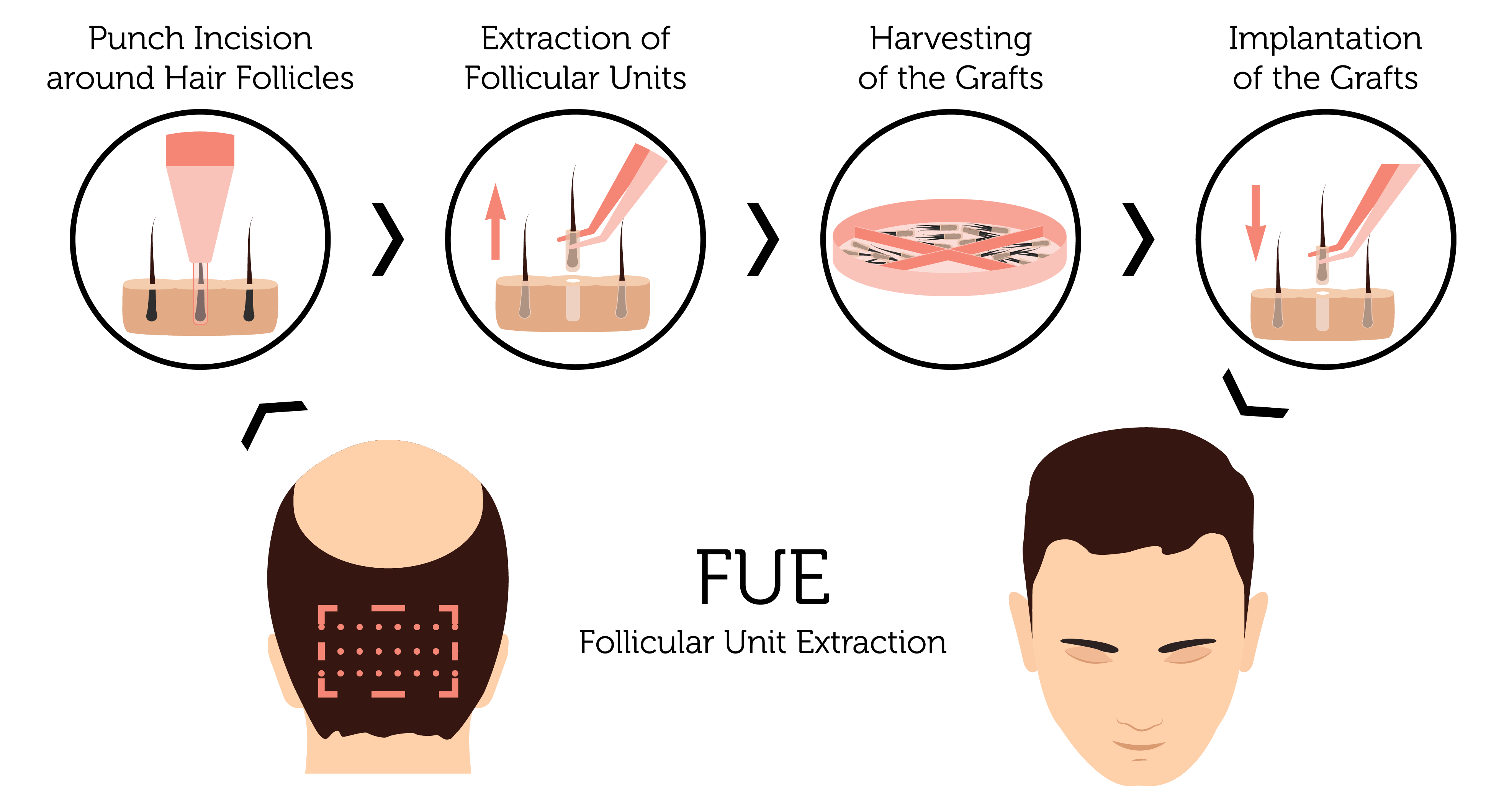
Human hair emerges from the scalp in groups that are the visible part of a histological structure known as a hair follicle (hair graft). It contains terminal or vellus hair, sebaceous gland, arrector pili muscle, perifollicular dermis, adipose tissue, eccrine glands, nerve and vascular networks.
1, 2, 3 or 4 terminal hairs can grow from the follicular unit, the different proportions of which determine the density of the hair. In the central occipital part of the head of Caucasians, the density of follicular units ranges between 65-85 FU/cm2 and on average 2-3 hairs grow from a follicular unit.
Follicular unit density (FU/cm2) and hair density (hair/cm2) vary from patient to patient, from one part of the scalp to another, and between different races. Asians have a lower hair density (154-162 hairs/cm2) than the Caucasian population (214-230 hairs/cm2). Blacks also have a lower hair density (148-160 hairs/cm2). The diameter of the terminal hair is paradoxically the smallest in Caucasians, on average the hair of Asians leads (4). In Caucasians, hair density is also different depending on hair color. Dark hair dominates the average, but the density is the lowest, on the contrary, light hair is fine, but there are more of them per cm2.

The doctor will calculate the number of grafts needed to achieve the best result. Tests and detailed questions will determine if you are suitable for a hair transplant. The donor area from which the grafts will be taken will also be decided.
Before the procedure, the doctor informs you about some steps that need to be considered. All the above recommendations must be taken into account.
The hair in the donor area is shortened and the grafts are removed. The number of grafts required for transplantation varies depending on the width and clarity of the area required.
After the operation, there is a long follow-up process. After 12 months of intervention, the final result will appear. If you want to achieve the desired result, you should be careful and follow the doctor’s recommendations.





